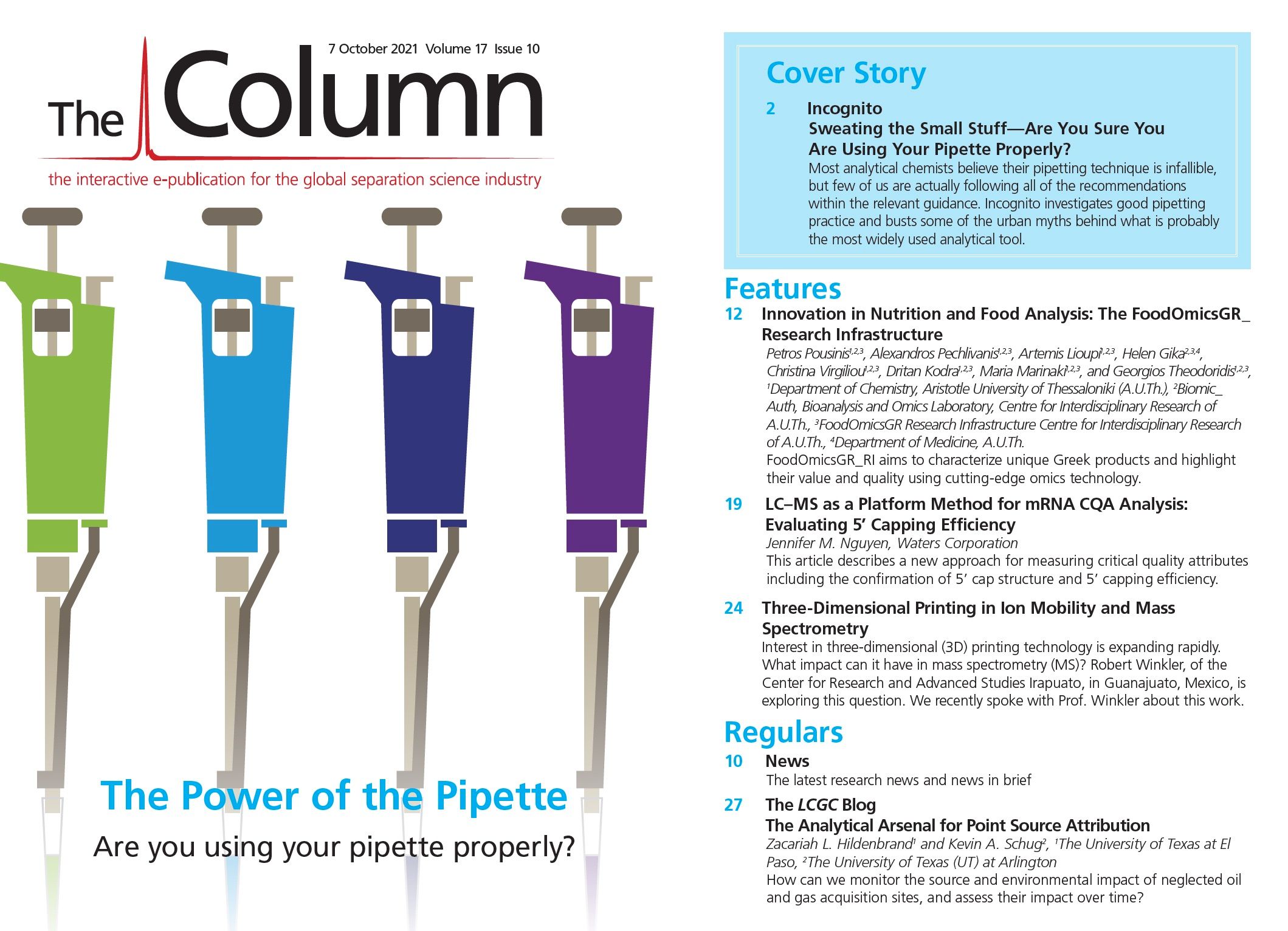Analyzing Glycerol in Biodiesel Using SPE and HPLC-RI
Researchers have developed a viable alternative to existing gas chromatography (GC) methods for glycerol determination in biodiesel using solid-phase extraction and high-performance liquid chromatography with a refractive index detector (SPE–HPLC-RI) (1).
Derived from the oils and fats of plants or animals, biodiesel is one of many alternatives to crude oil fuel sources. Considered a drop-in biofuel as it is compatible with existing diesel engines and distribution infrastructure, it is usually blended with petrodiesel, with 60 countries around the world mandating its addition. Countries such as the USA, Brazil, China, and Thailand all require petrodiesel to be blended with biodiesel in varying proportions, quite often hovering around the 10% biodiesel to 90% petrodiesel mark (2).
While biodiesel is compatible with modern diesel engines, the sole use of biodiesel as a fuel source is not possible without engine modifications, and in fact biodiesel contains a substance that can cause problems in car engines and in storage infrastructure (1). Glycerol, a co-product of the transesterification of oils and fats, needs to be monitored when blended with traditional petrodiesel. This is because during the blending process high concentrations of glycerol can separate out in the storage tanks. Furthermore, issues such as deposit formation, clogging of fuel injectors, and the production of harmful combustion products, such as aldehydes, are also related to high glycerol concentrations in biodiesel (3).
Currently a technique using GC monitors glycerol concentrations; however, this technique was developed for biodiesels made from canola oil and is not necessarily adequate for biodiesels made from other oils and fats. For example, in Brazil, around 70% of biodiesel is made from soybean oil, with the remaining 30% coming from animal tallow. Analysis with the current standard technique can often yield overlapping peaks, making analysis of biodiesel quality difficult. The great diversity of raw material used for biodiesel production presents many challenges for analytical chemists. Rising to that challenge, researchers aimed to develop a new method to detect and quantify glyercol in biodiesel using SPE and HPLC using a refractive index detector.
The resulting method proved capable of accurately quantifying glycerol in biodiesel samples made from raw materials containing different proportions of soybean oil and tallow. The new method offers a simple, quick, and effective method of determining free glycerol in biodiesel and a viable alternative to existing methods.
References
- D. de Almedia Cozendey et al., Microchemical Journal 168, 106347 (2021).
- Portal Tudo sobre Biodiesel (BiodieselBR). Tudo sobre Produção mundial de biodiesel e Demanda mundial.
Available at: www.biodieselbr.com, 2020. - I.P. Lôbo, S.L.C. Ferreira, and R.S.D. Cruz, Quim. Nova 32(6), 1596–1608 (2009).

New Method Explored for the Detection of CECs in Crops Irrigated with Contaminated Water
April 30th 2025This new study presents a validated QuEChERS–LC-MS/MS method for detecting eight persistent, mobile, and toxic substances in escarole, tomatoes, and tomato leaves irrigated with contaminated water.

.png&w=3840&q=75)

.png&w=3840&q=75)



.png&w=3840&q=75)



.png&w=3840&q=75)











